Home »
Misc »
How to step back in basketball
How to step back in basketball
USA Basketball - Master the Step Back to Get Clean Shots
As players play against bigger, stronger, more athletic opponents, they find that offensive moves that were previously successful are no longer as effective. The initial offensive move that allowed players to get by a defender is now cut off by quicker, better athletes. When players find themselves in this situation, they need to develop counter moves in response to improved individual defenders.
When offensive players can't "get by" the defender, they must learn to "get away" from the defender to create space to score. The "Step Back" is a counter move that will help players do just that.
This move is most effective around the basket, in the lane, or inside 15 feet. Once you move beyond that range, it becomes a very difficult and low-percentage shot. It should not be a staple of a player's perimeter offense, but can be an extremely valuable weapon in the paint.
Here are the basic components of the Step Back:
Attack The Defender First
The Step Back is a "counter move.![]() " It is used only after the initial drive is stopped. You must force the defender to stop the drive first by trying to get by him with your drive.
" It is used only after the initial drive is stopped. You must force the defender to stop the drive first by trying to get by him with your drive.
Get Into The Defender
If the defender slides to cut you off, dip the lead shoulder and continue to sell the drive. This forces the defender to fully commit to stopping your initial move, and makes it more difficult for him to react to your counter. You now have him digging in, with his weight back on his heels.
Press Off The Front Foot
Push hard off the front foot to create separation from the defender. Get as much distance as possible to create space to shoot. The direction and angle you move in as you separate will be determined by where the defender is, and where you are on the floor. Typically, the direction is on a 45-degree angle--like a "V." You aren't stepping straight back, and you aren't stepping sideways--but somewhere in between, based on where the defender is positioned.
Land On Back Foot First
Try to land on the back foot first, not in a jump stop. This will create more balance and rhythm on the shot, and allow you to adjust to any reaction by the defender.
This will create more balance and rhythm on the shot, and allow you to adjust to any reaction by the defender.
Keep Shoulders Forward
As the lead foot comes back, keep the shoulders forward as the shooting motion begins. This keeps players low and athletic on the move and prevents you from fading away unnecessarily.
Straight Up On The Shot
If enough space is created, there should be enough room to get off a high percentage jump shot. If good distance and separation isn't created on the move, players are forced to fade from the defender on the shot. This leads to shots falling short and greatly decreases shooting percentage.
Players at every level will be faced with quick, athletic defenders who are tough to get by on the dribble. When this situation occurs, counter moves become necessary to create space. The "Step Back" is an excellent counter move to develop, and with practice and repetition, this move can provide an answer to those tougher defenders you will face at higher levels.
Is James Harden leading a revolution? Or is he step-back marching the NBA into an offensive wasteland?
Sep 1, 2020
HOUSTON ROCKETS GUARD James Harden receives an inbounds pass in the left corner, where the reaction to the mere threat of the NBA's trendiest shot descends into the absurd.
There are 54 seconds left before halftime in Game 3 of a 2019 first-round playoff series between the Rockets and the Utah Jazz. As has long been the custom when the ball comes to Harden -- the human version of a 20-second timeout -- the game grinds to a halt. Utah's raucous crowd trains its collective eye on him.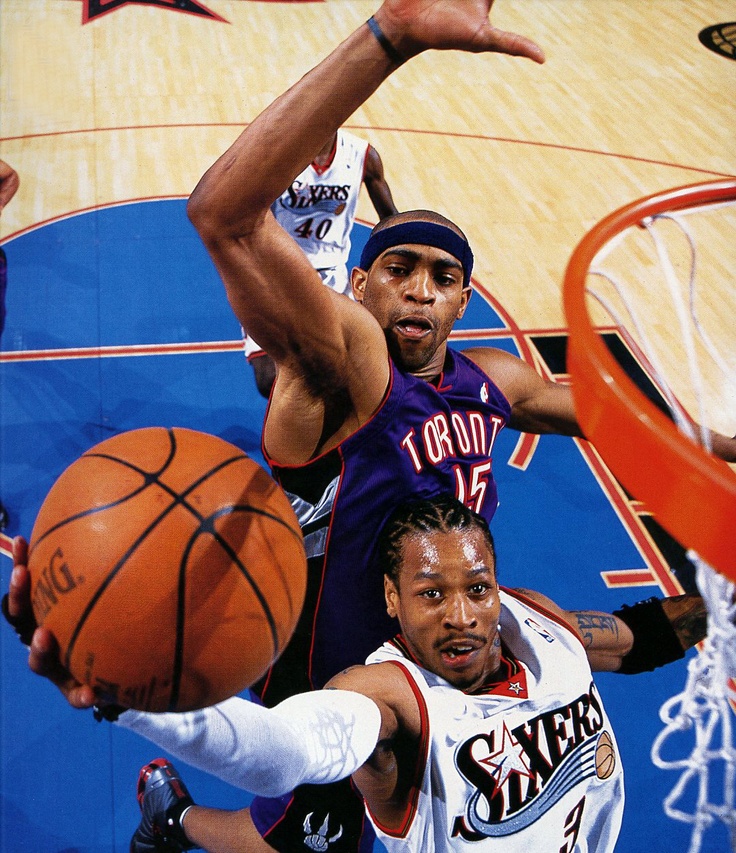 And for a moment, it goes as thousands of possessions have gone before it.
And for a moment, it goes as thousands of possessions have gone before it.
Harden's defender, Jazz wing Royce O'Neale, arms wide and feet splayed in his defensive stance, crowds the 3-point line and the former MVP behind it. Two Jazz help defenders lurk along the baseline, just in case. If Harden wants to score, he has a choice: drive around O'Neale and into the teeth of the Jazz defense, or shoot over him.
Then, the absurdity. After a few brief seconds of pretense, O'Neale is suddenly no longer face-to-face with the NBA's toughest individual assignment. O'Neale -- a man who played in all 82 games last season, a man who presumably knows what he's doing -- slides around and behind Harden, O'Neale's feet straddling the sideline. He is guarding the game's most prolific scorer by standing out of bounds.
Most shocking of all, it works.
When Harden chooses not to drive, Ricky Rubio slides over to double-team him, forcing the ball out of Harden's hands and, eventually, to then-teammate Chris Paul, who launches a 3 that's blocked by a hedging Rudy Gobert. The scheme is extreme, if not illogical.
The scheme is extreme, if not illogical.
Why protect the 3 feet of 3-point territory between the arc and the sideline while giving Harden an unimpeded path forward? The answer: because Harden -- like a significant portion of the league these days -- prefers to go backward.
Tim Warner/Getty ImagesOver the past few years, the step-back 3 has become the defining shot of the NBA's 3-point addiction. Its charge -- selling a downhill drive to create space for a quick retreat -- is simpler than its mastery. The two steps traditionally used to attack the basket are instead used to find space away from it.
And nobody employs it more than James Harden. In the 2019-20 regular season, Harden used some version of the step-back 3 on 39% of his overall shot attempts and 69% of his 3s, both tops in the league. He shot 37% on his 584 step-back-3 attempts, a total that dwarfed the 106 hoisted by Steph Curry to lead the league just five years ago.
Harden, by himself, attempted more step-back 3s during this regular season than any team in the NBA but his own.-Step-5.jpg/aid43486-v4-728px-Play-21-(Basketball)-Step-5.jpg) He nearly doubled the closest individual (Luka Doncic). His made step-backs from beyond the arc (214) would have placed him among the top 10 in 3s made overall.
He nearly doubled the closest individual (Luka Doncic). His made step-backs from beyond the arc (214) would have placed him among the top 10 in 3s made overall.
But it's not merely his own game that Harden is remaking. It's the entirety of the league.
That the move has powered his individual success -- an MVP and three scoring titles -- has turned Harden into the NBA's version of an Instagram influencer. In the period for which full-season Second Spectrum data is available, from 2013-14 to 2019-20, leaguewide per-game attempts of the step-back 3 increased 455%, during a time in which overall 3s were up 59%.
The evidence is everywhere -- in high school workouts and Division III games; in the climactic shot of a Gatorade commercial; at a Lakers practice, where comedian Dave Chappelle gets a tutorial; in The Big 3, where Joe Johnson hit a game-winning, step-back 4-pointer; at Adidas, which sells Harden Stepback Shoes; on YouTube, where a 6-year-old mimics Harden in front of Harden; and, of course, in the NBA's rulebook, where language added in 2019 strictly defines the "gather" -- an attempt, some say, to keep Harden from turning his step-back 3 into a three-step step-back 3.
"A game-changer," Harden says, rather grandiosely, when asked about the shot's sphere of influence. "I'm here to inspire, whether it's youth or my peers." Or, as Harden told ESPN's Tim MacMahon last year: "You know how [Jordan] has his fadeaway and Dirk has his one-leg and [Kareem Abdul-Jabbar] had the skyhook? I want my step-back to be one of those moves that lasts forever."
At the rate the shot is being hoisted, Harden might well get his wish. But does that represent progress for NBA offenses -- or is it actually, well, a step back?
The move was born out of desperation in the '70s. Then-college star Kiki VanDeWeghe couldn't get a shot off during his summer workout with NBA vet Kermit Washington. His solution? Well, he stepped back. "It became known as the Kiki Move," he says.
Getty ImagesIT BEGAN WITH a phone call. It was a summer day in the late 1970s, and legendary coach Pete Newell needed a body. Any body. More specifically, Newell needed a defender for NBA forward Kermit Washington, whom he was working out during the offseason. Ernie Vandeweghe, a Knicks swingman from the franchise's early years, had been the Lakers' team physician for seven seasons.
Ernie Vandeweghe, a Knicks swingman from the franchise's early years, had been the Lakers' team physician for seven seasons.
Vandeweghe and Newell were friends, and Newell thought Vandeweghe could help. So when Newell called Ernie in search of the body to body up against Washington, Ernie sent his son Kiki, at the time a forward at UCLA.
The one-on-one between Kiki Vandeweghe (who later altered the spelling of his family name to VanDeWeghe) and Kermit Washington was the start of Newell's decadeslong camp for big men, which would eventually see the likes of Hakeem Olajuwon and Shaquille O'Neal on its courts.
More to the point, their workout would birth what would become -- four decades later -- the NBA's hottest shot. VanDeWeghe was a skinny collegian and far slower than the 6-foot-8, 230-pound Washington. On their first day together, VanDeWeghe showed up to a nondescript gym at Rogers Park, less than 2 miles from The Forum in Inglewood, and soon realized that if he had any hope of getting his shot off against Washington, he'd need to try something new.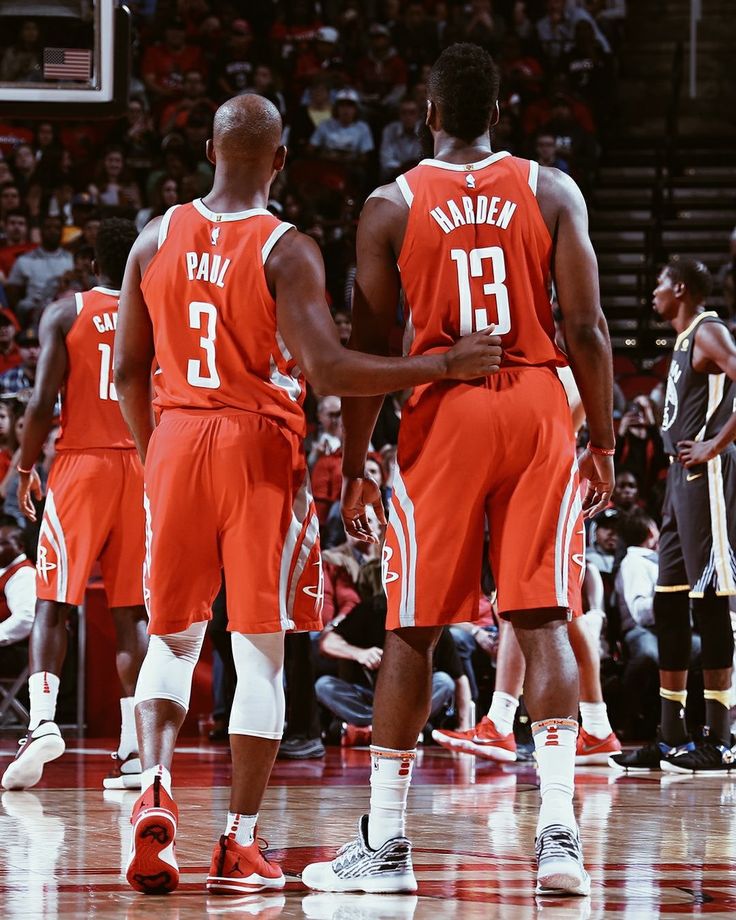
There, bodying up against Washington inside, VanDeWeghe, in desperation, began stepping back to shoot. "I couldn't get my shot off," VanDeWeghe says. "The first couple of times I did [the step-back], Newell said, 'Hey, do that again. What was that move?'"
By his own admission, VanDeWeghe might not have invented the move. He recalls having seen it occasionally used by the Philadelphia 76ers' World B. Free, the flamboyant and famously free-shooting 6-2 guard who had learned the game on the Brooklyn playgrounds. "It was like, 'Whoa!'" VanDeWeghe says. Free was quicker and jumped higher than Kiki ever would, but VanDeWeghe had filed it away. And for upward of three hours a day that summer, VanDeWeghe went one-on-one with Washington, honing the move that would ultimately come to define his career.
"It became known as the Kiki Move," he says. For the rest of his college career, VanDeWeghe consistently employed his seminal step-back -- and did the same through 13 seasons in the NBA, where he would become a two-time All-Star. He also remained with Newell's camp for a quarter-century, as a player and then an instructor. And he taught the step-back to everyone who came through.
He also remained with Newell's camp for a quarter-century, as a player and then an instructor. And he taught the step-back to everyone who came through.
His work was not done. In 1999, VanDeWeghe landed a job as an assistant with the Dallas Mavericks under Don Nelson. Nelson hired him to work with Dirk Nowitzki, then heading into his second season, on his footwork. VanDeWeghe mentored the 7-footer, as well as guards Steve Nash and Michael Finley, on the step-back.
By 2000, he was also tasked with tutoring Wang Zhizhi, a rookie 7-footer from China whom the Mavs had selected in the second round. VanDeWeghe, of course, taught the Kiki Move to Wang, who was slow afoot and not particularly keen on interior play. VanDeWeghe drilled Wang on footwork, preaching the importance of timing and balance.
Still, when Wang attempted a step-back 3 for the first time, Nelson glared at VanDeWeghe.
"I'm going to fire you," Nelson said. "Why are you teaching 7-footers a step-back 3?"
"Because you can't guard him," VanDeWeghe responded.
It was a revelation that would take the NBA two decades to fully own.
Step-back 3-point attempt rate
| NBA seasons | James Harden | NBA |
|---|
| 2015-16 | 2.8% | 0.85% |
| 2016-17 | 5.6% | 0.93% |
| 2017-18 | 15.3% | 1.34% |
| 2018-19 | 31.2% | 2.20% |
| 2019-20 | 38.8% | 3.04% |
| 3PA rate is the % of total FGA that are 3-pointers |
|
"IT'S OUR FAULT, really," says Wizards guard Bradley Beal. "Kids, and everyone else, are going to watch guys like James and myself doing the step-back. It's a tough move."
After a preseason win over the Knicks, Beal is stuffed back into a corner of the visitors locker room at Madison Square Garden.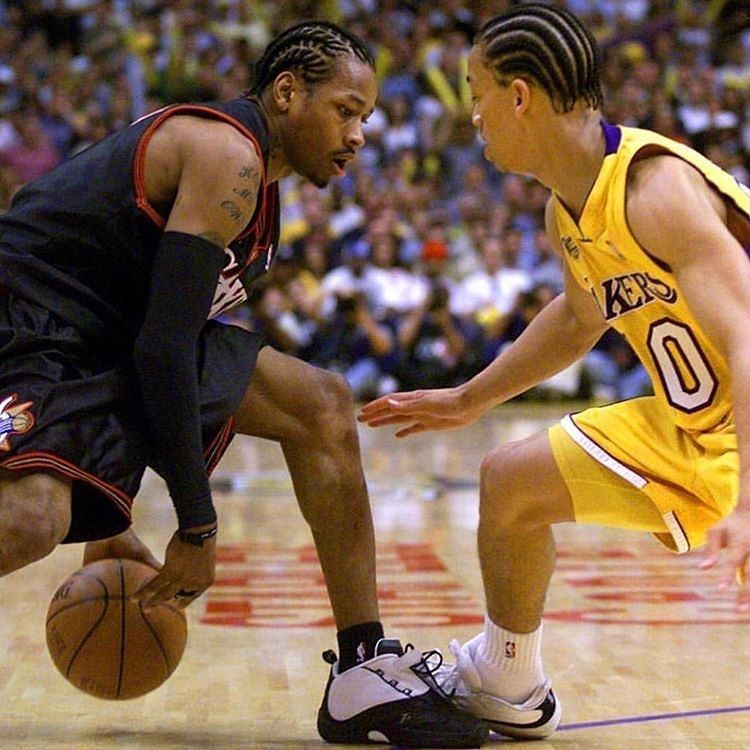 He's on his way out, backpack slung over his shoulders, hat backward and unfastened, but he's got time to talk about his favorite move, on which he shot 39% on 72 attempts last season. (He'd go on to shoot 32% on 65 attempts this season.)
He's on his way out, backpack slung over his shoulders, hat backward and unfastened, but he's got time to talk about his favorite move, on which he shot 39% on 72 attempts last season. (He'd go on to shoot 32% on 65 attempts this season.)
Is it a good move? Beal is asked. "It depends on who's taking it."
In today's NBA, though, everyone is.
Harden says he wants to be defined by it. Damian Lillard won a 2019 first-round series with it. (Paul George, the defender, later called it a bad shot -- which did little to change the fact that it had gone in.) Luka Doncic has made it his go-to move -- most recently hitting a high-arching 27-foot buzzer-beater in Game 4 of the Mavericks' first-round series against the Clippers. Even those who don't shoot it are planning to. "When the time is right, I'll get to show that," says Rockets guard Ben McLemore. (Promising news on that front: Though McLemore attempted just 21 step-back 3s this season, he made 13 of them, a 61. 9% success rate that would've led the NBA if he qualified.)
9% success rate that would've led the NBA if he qualified.)
For the players in the 2019 draft class, the move is as vital as a pair of shorts -- you don't step on the court without one. No. 3 overall pick RJ Barrett of the Knicks? He says he's got one. Pelicans center Jaxson Hayes, the No. 8 pick, says, "It's definitely something I've been working on." Says Bulls rookie guard Coby White, "A lot of people say it's my go-to move. You can't guard it."
Then there's top pick Zion Williamson, whose shooting form has been doubted and dissected. Built like a defensive end, Williamson dominates when driving to the basket. He wouldn't dare move away from that basket on purpose, would he? Williamson smiles. "I've been practicing it," he says.
Last summer, according to skills coach Drew Hanlen, Jayson Tatum -- who shot 32.5% on 40 step-back-3 attempts in 2018-19 -- worked tirelessly on the move. His first one of the season came in the final seconds of the third quarter of an Oct. 30 game against the Bucks. That 27-footer earned him a courtside high-five from Celtics legend Paul Pierce, who has, for his part, called himself the move's pioneer. (These days, everyone wants credit for inventing the step-back 3.) And it continued until February, a month in which Tatum hit 19 (five more than his total from all of last season) of his 61 made step-back 3s. (He improved to an impressive 41% on step-back 3s in 2019-20.)
That 27-footer earned him a courtside high-five from Celtics legend Paul Pierce, who has, for his part, called himself the move's pioneer. (These days, everyone wants credit for inventing the step-back 3.) And it continued until February, a month in which Tatum hit 19 (five more than his total from all of last season) of his 61 made step-back 3s. (He improved to an impressive 41% on step-back 3s in 2019-20.)
Consider the 2019-20 leaders in attempted step-back 3s: There's young (Doncic, in his second season, attempted 321, second in the league) and old (in his 17th season, LeBron James hoisted 115, good for fifth). There's tall (Tatum, at 6-8, jacked up 148, the third most) and short (6-1 Trae Young was seventh with 96).
There are those who shouldn't take them but do: Buddy Hield, despite making only 33.7%, attempted 95 step-back 3s this season. CJ McCollum was even worse, shooting 33.3% on 90 attempts. Despite having career years, Spencer Dinwiddie (62 attempts) and Devonte' Graham (64 attempts) shot 25. 8% and 26.6%, respectively.
8% and 26.6%, respectively.
TrueHoop analyst David Thorpe doesn't need to see such shots to know how he feels about them. "I can just tell you I hate it," he says. "Your momentum is going opposite where the ball needs to go. I've been teaching high school kids since '87, and I've been teaching pros since '99, and I've been teaching NBA players since 2003. I've not yet been teaching the direct step-back 3. I haven't had a player that I thought could get it right."
Says Warriors assistant coach Bruce Fraser: "I worry about the kids. I'm not trying to be the keeper of the pure world of basketball, but these are really difficult shots from really difficult range. Kids need to stop. There's so much you can work on with a normal shot before you start adding these elements."
There are, of course, exceptions, Thorpe says -- like Harden, whose step-back 3 he calls the most efficient shot since Kareem's skyhook: "[Harden] knows what he's doing."
Indeed, while Harden averaged 1.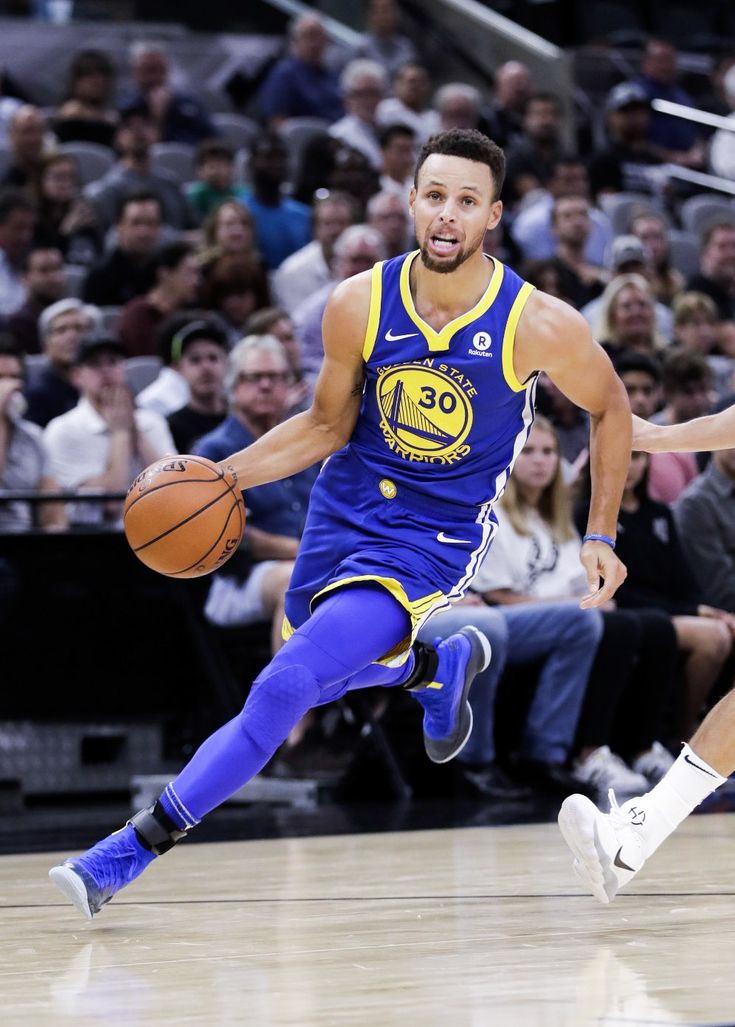 12 points per shot on his step-back 3s this season, good for ninth in the NBA, it's his penchant for drawing fouls (he's led the NBA in free throw attempts the past six seasons) that ESPN's Kirk Goldsberry says separates him. The move is worth more than 3.0 points per shot -- roughly three times the average field goal -- when Harden steps back, fires a 3 and gets hacked.
12 points per shot on his step-back 3s this season, good for ninth in the NBA, it's his penchant for drawing fouls (he's led the NBA in free throw attempts the past six seasons) that ESPN's Kirk Goldsberry says separates him. The move is worth more than 3.0 points per shot -- roughly three times the average field goal -- when Harden steps back, fires a 3 and gets hacked.
The point is clear: When wielded by Harden, the step-back is undeniably a step forward. But what about for everyone else?
In the 2019-20 regular season, all shots in the NBA were worth, on average, 1.08 points -- roughly the same as all 3-pointers. Step-back 3s? Those were worth 1.04. Not great. And if you remove all of Harden's attempted step-back 3s on the season (and his 1.12 points per shot), that figure falls to 1.03 points.
In other words, if NBA players (save for Harden) took step-back 3s all game, their teams would score about five points fewer per game.
The step-back 3 is sexy. The step-back 3 is ubiquitous.
The step-back 3 is not, in fact, a great shot.
James Harden, who says he wants his step-back 3 "to inspire," made an absurd 18 of them in a two-game stretch in December. He shot 37.1% on such shots this season.
David Liam Kyle/NBAE/Getty ImagesTHE WOOD-PANELED stalls in Houston's expansive locker room are arranged in the shape of a horseshoe facing a large projector screen. After an October preseason game against the Spurs, a few Rockets players sit on folding chairs and are asked why the step-back 3 is the NBA's shot du jour.
"This guy," McLemore says.
He points to Harden.
Across the room, a media horde engulfs the Rockets guard, his bearded stare visible through a forest of extended iPhones. After dropping 40 on San Antonio, Harden is still the show.
This season, Harden averaged 34.3 points per game. And he did so while taking those 584 step-back 3s, 263 more than Doncic, his closest competitor. Opposing coaches shake their heads, then send double-teams when he's barely over half court. Nothing has worked.
Nothing has worked.
Consider an early-December game against the helpless and hapless Cavaliers, who take turns trying to slow Harden down.
After a 17-2 run to start the fourth puts Cleveland up 99-90, Harden, already with 37 points, responds. He holds the ball in front of Jordan Clarkson on the left wing before taking one dribble toward midcourt and an abrupt between-the-legs bounce to change direction. Two hard dribbles put Clarkson on his heels. Clarkson skids inside the arc as Harden steps back behind it and nails a 3 with 7:15 remaining.
Nearly a minute later, Harden looks straight at rookie Kevin Porter Jr. before taking two quick hops back in front of Cleveland's bench. Porter's shoulders drop as the ball goes through the net.
Two minutes after that, Matthew Dellavedova puts his body on Harden at the top of the arc. The Beard uses him as leverage to pogo back and make a 29-footer -- Harden's lefty follow-through slamming Dellavedova's head for good measure.
At 2:24: Harden, again guarded by Porter and then double-teamed by Collin Sexton, gives the ball up to McLemore before getting it back, then hopping back and to the right of Porter to hit a 27-footer.
Harden finishes with 55 points on 10 3s. Nine of them are step-backs. The Rockets win 116-110.
Two days later, he's at it again in Orlando, scoring 54 while nailing 10 from behind the arc. Once again, nine of those 10 are step-backs -- the exclamation point coming when Harden steals the ball from Evan Fournier, glides the other way and toe-taps away from two defenders to nail his last step-back trey with 4:15 left. Houston wins 130-107.
It is easy to see why the rest of the league is smitten. This season, step-back-3 attempts per game (6.0) were up 36% from the 4.4 taken in 2018-19, a tally that itself was a 76% increase over the prior season's 2.5, which was a 47% increase over the prior season's 1.7.
But then there's this: Despite Lillard's and Doncic's viral heroics, according to ESPN Stats & Information data, NBA players were a mere 2-of-20 on game-tying or go-ahead step-back 3s in the final 10 seconds of games this regular season.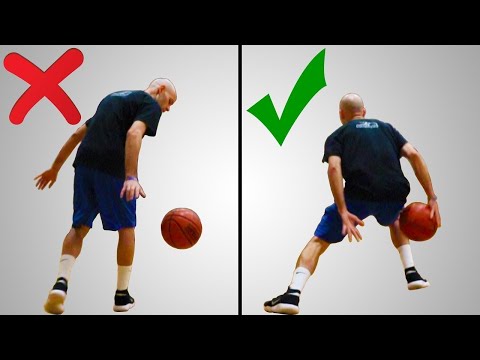
There is, perhaps, an explanation for that.
NBA players were an abysmal 2-for-20 on step-back 3s in the final seconds of games during the regular season. Why? Because as the move has exploded in popularity -- up 455% since 2013-14 -- defenders know what's coming.
Gary A. Vasquez/USA TODAY SPORTSOn Christmas Day, in the fourth of the day's five games, the Clippers lead the Lakers by three in the final seconds. LeBron James has the ball, and after a series of pick-and-roll switches, he faces up against Clippers guard Patrick Beverley on the right wing.
James dribbles once, readying himself to launch backward. As he does so, rising for a potential game-tying step-back 3, Beverley lies in wait. With his left hand, Beverley casually strips the ball from James, sealing the win for the Clippers.
Nine days later, in the waning seconds of an Eastern Conference tilt, slippery Hawks point guard Trae Young has a mismatch on Celtics big Daniel Theis. With Atlanta down by two, Young feigns a drive and pulls back; Theis plods along in lockstep, like a dance-team member with the routine down cold. He swats Young's shot as the horn sounds.
He swats Young's shot as the horn sounds.
To watch those plays is to sense a trend: Beverley and Theis knew exactly what was coming. The counter, it seems, has become the primary option. And that has changed the geometry of the game.
In search of space, shooters are stepping back. In search of a response, the defenders are stepping out. It's a two-step dance. A retreat that's not a surrender.
But as defenses continue to adjust, will players continue to step back even farther?
Says Beal, eyes wide, "I wouldn't be surprised by anything."
How to get results in basketball
"Any experienced basketball player will tell you that there is a huge difference between learning and applying technique!"
Online basketball expert, national level player
Any experienced basketball player will tell you that there is a huge difference between learning and applying technique! It's only natural that beginners (or those who are returning to play after a long break) get caught up in the game on the court - all you hear is "rush.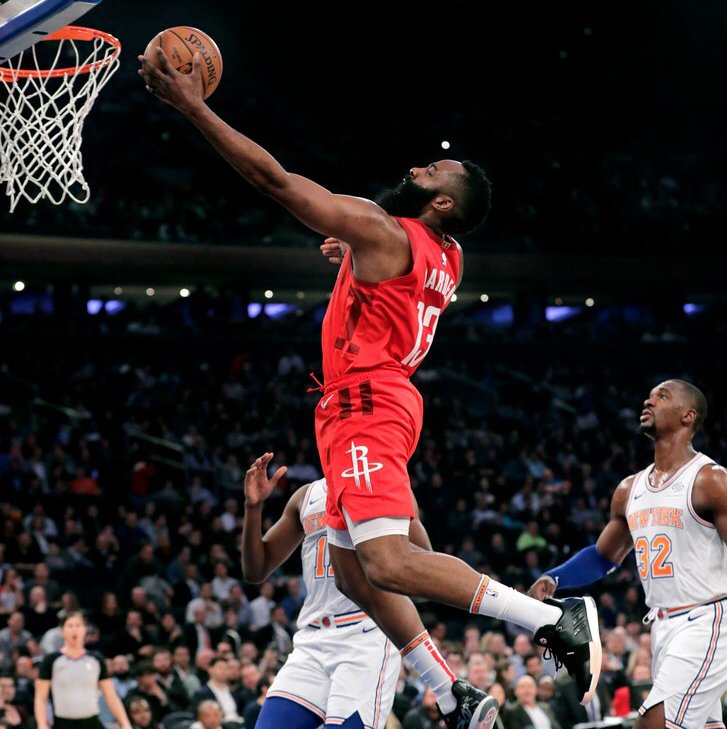 ..to the rim...lead...use the whole court". All your strength is focused on not making mistakes, in order to know that you do not let your team down. What exactly are you doing? Positions? rebounds? Blocks? Intercepts? This is really important, but there are other great ways to add value to the team. Take a break from your own achievements - this will allow you to become a more valuable player. This article does not contain obvious advice on keeping fit, working on speed, dribbling, serving, etc. But here you will find 5 ways to become more efficient from the very next game. You are much closer to success than you think!
..to the rim...lead...use the whole court". All your strength is focused on not making mistakes, in order to know that you do not let your team down. What exactly are you doing? Positions? rebounds? Blocks? Intercepts? This is really important, but there are other great ways to add value to the team. Take a break from your own achievements - this will allow you to become a more valuable player. This article does not contain obvious advice on keeping fit, working on speed, dribbling, serving, etc. But here you will find 5 ways to become more efficient from the very next game. You are much closer to success than you think!
The main reason basketball players lose passes and miss comfortable rebounds is because their hands aren't ready. This seems obvious, but still deserves special attention. Your hands should always be ready to receive the pass, and your palms are directed towards the ball - the server will perceive them as a target.
Here are a few exercises you can do during your warm-up to prepare for the game:
POWER DRIBLING HITTING THE BALL
The correct execution of passes gives confidence on the court.![]() However, there are a few things to keep in mind here.
However, there are a few things to keep in mind here.
The basics of technique play a huge role for beginners. Practice a 2-handed chest pass and a bounce pass. After that, you can move on to other methods.
Don't pass just for the sake of passing. Determine who can take the pass, who can't, (identify strong offensive players, weak defenders) and go for it!
IMPORTANT: DO NOT KEEP THE BALL - make passes and passes will be made to you.
Low, wide stance: There are only 2 cases where you should deviate from this rule - this is rebounding and covering the ball. In any other situation, it is important that the stance is low: straight back, bent knees, feet shoulder-width apart, arms extended forward. In this position, you are firmly on your feet and ready to respond to passes. It is very important to be between the defender and the ring.
This is the main way to participate in offense without the ball! If you are a beginner basketball player, then you will most likely score infrequently.![]() Perform screenings to:
Perform screenings to:
- give partners the opportunity to open up
- open yourself
Shield the dribbler, shield your opponents without the ball (to help your teammates) and keep moving. The ball will find its way to you.
SITE 9 LOCATION0002 There are 8 main points on the court that attackers usually occupy to attack. Simple arithmetic suggests that at least 4 of them are free at this moment. Make sure you don't get too close to the rest of your team. Why?
- This allows you to strengthen the attack - so it will be more difficult for defenders to keep track of all opponents;
- You will be in a better position to shoot/pass/dribble to the basket when you receive the ball.
Do not forget that your hands should always be ready.
Try to consciously change positions (moving quickly between two points on the court) so that you get used to playing from different points.![]() A conscious change of position will bring you the location of your team, but the enemy defender will clearly dislike you!
A conscious change of position will bring you the location of your team, but the enemy defender will clearly dislike you!
This is certainly not a complete list of tips, but rest assured that if you follow them, your next game will be better than the last!
Forward!
A. Ya. Gomelsky about strategy and tactics in basketball
copies of swiss watches
Strategy is the main theoretical direction of the entire work of the team, which determines the means and methods of preparation for the main competitions. Four-year plan for the preparation of the USSR national team for the Olympics in Seoul - the strategy of the team in 1985-1988. The strategy also provides for the management of the team during the competition.
Tactic is a part of the strategy that solves the main tasks of training, taking into account specific opportunities - the resources of the team, the characteristics of opponents, the conditions of the competition. All this determines the tactical and combination baggage of the team.
All this determines the tactical and combination baggage of the team.
When choosing tactics of the game (attack), one should proceed, firstly, from the real capabilities of the players, taking into account, first of all, their strengths, for the disclosure of which combinations are built and learned. Secondly, attack tactics are determined by the strength and weakness of a real opponent in a tournament, match.
I usually discuss playing combinations with the players for whom this combination is designed. I know the strengths of my players, but the players themselves know them even better and can make significant adjustments to the combinations I have proposed.
A.Ya. Gomelsky about playing defense
I believe that defense is the main concern of the coach: firstly, because the victory of the team largely depends on its strength, secondly, because the attack starts from the defense, like from the stove, in- thirdly, because the players themselves never work on the elements of protection, and finally, because the audience, as a rule, does not see it, even journalists often underestimate it.
The best team cannot win without a solid defense. Team defense is built on the individual characteristics, capabilities and mood of all players. Often in training, and even in competitions, individual players show indifference to defensive actions. It always bothered me and even angered me. Yes, the menial work on defense isn't that spectacular - except for things like block shots, rebounds, interceptions.' And many players are not aggressive on defense, they are resting on defense, trying to prove themselves in attack.
I am sure that without great desire, responsibility, initiative, passion, it is simply impossible to defend today.
If the defender allowed the attacker to receive the ball in the danger zone, he has already lost. And how many cases when the center is allowed to receive the ball in the three-second zone under the shield, without striving to actively fight for an advantageous position.
Often defensive players are in no hurry, they do not concentrate their attention and efforts enough on this part of the game.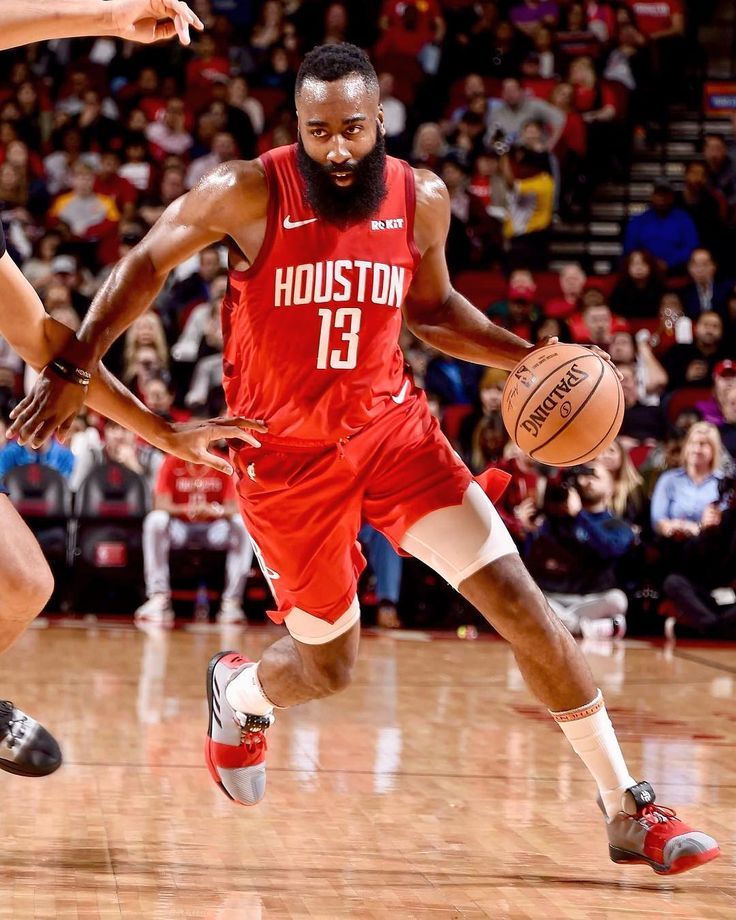
I want to emphasize that the psychology of defense is one of the most important concerns of a coach, and often more depends on the focus on defense than on technique and physical condition. Doesn't the ability to intercept the ball and win the rebound depend on the mind and the ability to calculate one's strength? If a player goes to intercept the ball, exposing his rear, and slips past the ball, is this not the result of poor calculation, inability to predict, anticipate the situation, think and act responsibly? All this is the psychology of protection.
I believe that a player who is weak and inept in defense causes more damage to the team than a player who is weak in attack. The definition of "good defense is head and legs", while still valid, is incomplete. Fast, tenacious, active hands that can both hit and intercept the ball, and prevent a throw, pass, kick the ball while dribbling - are no less important for a defender
Counterattack
Counterattack is the most spectacular and quick use of all opportunities to achieve result.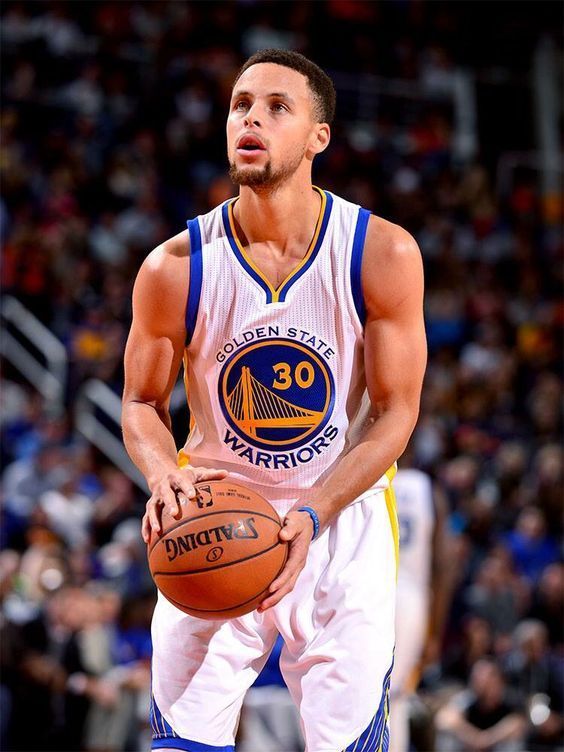
Fast play requires high technique. The desire to play at high speeds is commendable and acceptable only if the speed does not exceed the state of the art. Otherwise, there will be more mistakes, losses of the ball than achievements. Therefore, in an effort to prepare a fast break, it is necessary to train the execution of all technical elements at high speeds, using both active and passive resistance of defenders in situations 1-1, 2-1, 3-2, 4-3, 5--4 and with numerical equality.
My idea of a counter-attack is not only to move quickly towards the opponent's backboard, but also to quickly transfer the ball to the opponent's backboard with sharp passes, or, if there is no free recipient to receive the ball, by dribbling the ball, actively moving forward. In the final stage of the fast break, players strive to create a triangle in the front line of attack with the apex on the free throw line. There should be a player with the ball, and two other players - to the left and right of him, 4-5 m ahead.
A counterattack is possible in the following situations:
1) when intercepting the ball;
2) when taking a rebound on his shield;
3) after the opponent has taken free throws;
4) after winning a dropped ball;
5) after the opponent manages to pocket the ball.
The best outcome of a fast break is taking the opponent's ring with a numerical advantage, when implementing situations in numerical equality: 1-1, 2-2, 3-3, 4-4. This is easier than beating a 5-5 defense that has already built up its defensive formations.
There are three phases in a counterattack that are equally important for success:
1) the beginning of a fast break - rebounding the ball, first pass, movement of the players, their start;
2) the middle stage of the development of the attack - the transition by the players of the middle line of the field, their advancement;
3) completion of the attack - passing the ball at speed and throwing in close proximity to the backboard.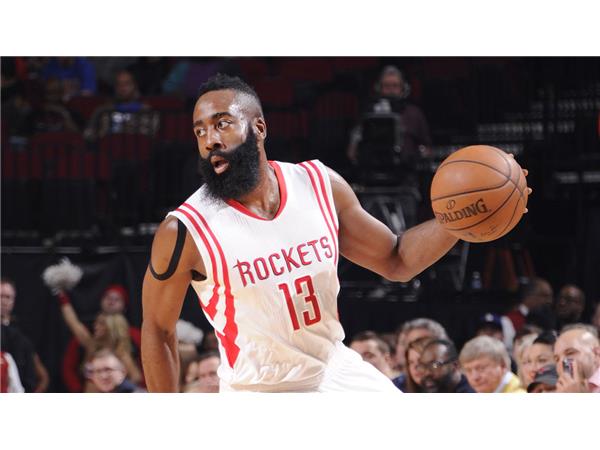
The timing of the "rehearsed fast break" depends on the speed of the players, the ball passes and the finishing shot. The USSR national team spent 5-7 s on a layered fast break. I think that the schemes of her tactical formations will provide great opportunities for the creativity of coaches working with any teams.
Playing in the USSR national team such powerful and tall centers as A. Sabonis and V. Tkachenko made it possible to carry out a counterattack through one long pass across the entire court.
Center #5, after recovering the ball from the backboard, passes it to runaway #2.
Such an attack was especially successful when building a zone or mixed defense, when one of the defenders or wingers playing in the front line of defense was given the task of running away at the moment of throwing at our ring, in the expectation that the giants would be able to take possession of the ball , bouncing off the shield, and make a long pass across the entire field.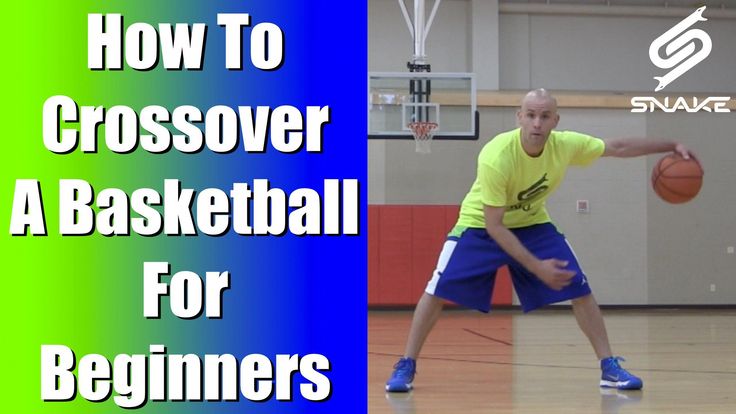 Naturally, such a system of counterattack requires special coordination of actions, and its development takes considerable time in the training process.
Naturally, such a system of counterattack requires special coordination of actions, and its development takes considerable time in the training process.
Development of a quick counter-attack through the middle of the field.
Players #5, #4, #3 are fighting for the ball and, having mastered it, they try to make the first pass to player #2, who passes the ball to player #1. Player #1 rushes forward dribbling through the middle of the court. Players #2 and #3 overtake the dribbler at high speed, form a triangle with #1, and finish the attack with a close range throw if they manage to create a numerical advantage under the opponent's shield.
If it was not possible to complete the attack in the first echelon, then the second echelon comes into action - center players #4 and #5. They, each on their own side of the court, rush to the opponent's shield. The one on whose side the ball is on ends the attack.
Development of a fast sideline break.
On a rebound from the left side of the backboard, the post makes a quick pass to player #2, who opens to receive the pass to the sideline, just above the free throw line. At the intersection of the sideline with the center, player #1 receives a pass from player #2, then passes it to player #4, who rushes forward on the left side. Player #4 has three possible continuations of the attack: give the ball to player #5 or #3, who is running towards the opponent's backboard in a straight line, or pass to player #2 in the area of the arc. It is clear that the transfer should be made to the most open player, who is in the most advantageous situation.
At the intersection of the sideline with the center, player #1 receives a pass from player #2, then passes it to player #4, who rushes forward on the left side. Player #4 has three possible continuations of the attack: give the ball to player #5 or #3, who is running towards the opponent's backboard in a straight line, or pass to player #2 in the area of the arc. It is clear that the transfer should be made to the most open player, who is in the most advantageous situation.
A similar situation occurs when attacking on the opposite side.
Development of a fast break after a free throw into our ring.
If player #4 catches a bounce or quickly clears a potted ball from behind the endline, the first pass is to the left sideline to player #1 opening at or slightly above the free throw line. Player #2 opens near the center circle, receives the ball and dribbles forward. Players #5 and #3 pass the dribbler along the touchlines, player #4 overtakes him from the right, and player #2 stays slightly back in the backing position. Thus, player #2 has four options to choose the direction of the attack.
Thus, player #2 has four options to choose the direction of the attack.
Same procedure as above, but after rebounding a field goal or after the ball is thrown in from behind the end line.
Developing a fast break after a dropped ball in the center circle or on the free-throw line in our half of the field.
Player #5 discounts player #4 who is ready to receive the ball with his hands up. After catching the ball, #4 passes forward to player #1, who opens up to receive that pass after being screened by player #3. Players #2 and #4 support the attack. Such a combination can be played in both directions. At the heart of her success is high growth, good jumping ability and the ability to accurately throw the ball to the partner of the center player.
Same scheme, but now player #4 screens player #2 who, having received the ball from player #3, rushes forward.
The easiest way to complete a counterattack is for the players to take the shortest path to the opponent's shield.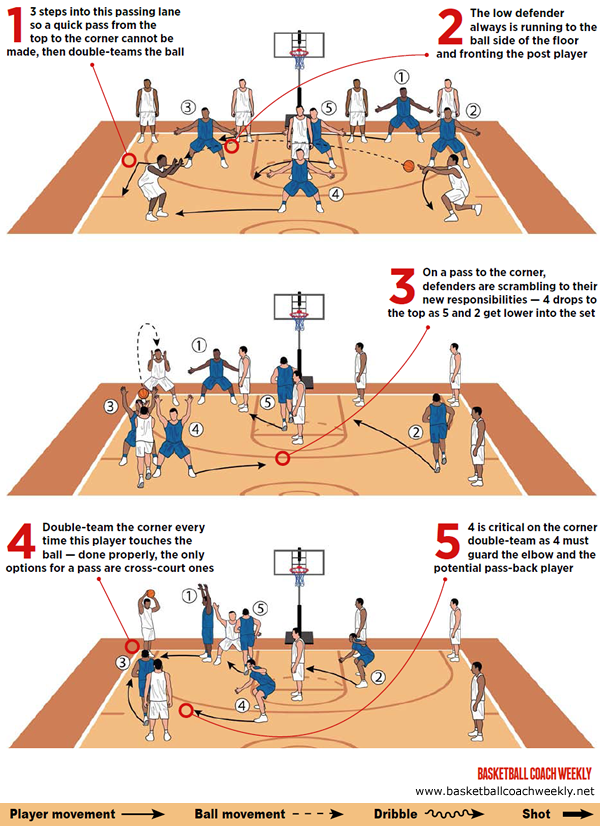 However, with the development of a counterattack, options are possible with cross screens
However, with the development of a counterattack, options are possible with cross screens
interaction like a trio
setting up screens for the players of the second echelon in the center of the field.
Many teams in the world, including the USSR national team, after they failed to complete the counterattack with a scoring throw, in the transition to a positional attack, spent precious time placing players, thus allowing the enemy to prepare for defensive actions and occupy all defenders advantageous positions. This is why a quick or non-stop attack after a counterattack ("transition game") is increasingly used in the tactics of the best teams in the world. I will give an example of such an attack in the USSR national team.
The fast break was not completed by the players of the first attack tier #2 and #3, nor the second tier #4 and #5. They, each on their own side, set up screens for fielders #3 and #2 for a shot from medium or long distance, and then go to the backboard to receive the ball in the three-second zone on the spot or to fight on the backboard, after a throw from one of the players # 2 or #3.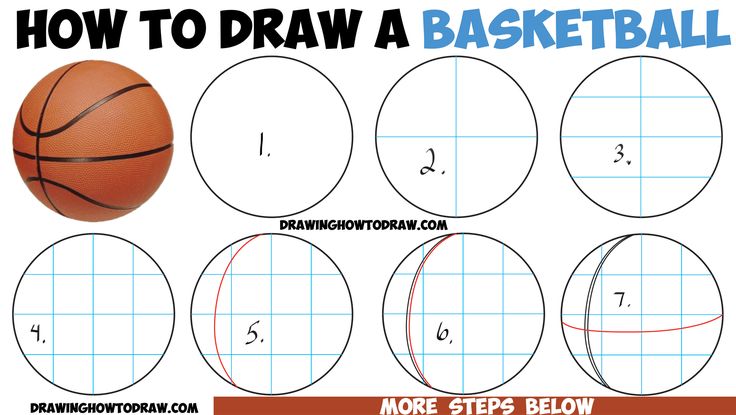 Options for a non-stop attack can be very different. This could be a double or triple screen for the team's sniper, or a winger or post entering the 3-second zone after receiving the screen. It all depends on the characteristics and capabilities of the player for whom the combination is being made.
Options for a non-stop attack can be very different. This could be a double or triple screen for the team's sniper, or a winger or post entering the 3-second zone after receiving the screen. It all depends on the characteristics and capabilities of the player for whom the combination is being made.
Double screen to Marciulionis (#2) to attack with his left hand from the free throw area.
Players #4 (Volkov) and #3 (Tikhonenko) simultaneously put up two screens for player #2 (Marciulenis). #2 breaks into the free throw line, where he receives the ball from player #1 (Sokka). "Marciulionis has opportunities to continue the attack:
a) receiving the ball in motion and passing under the backboard;
b) receiving the ball with a stop and shooting at
c) passing the ball to player #5 (Sabonis) in case there is a switch of defenders.
Players #4 and #2 after screening go under the backboard to fight for the rebound.
Mixed defense
There are several systems of mixed defense:
1. Four players build a zone defense 2-2
Four players build a zone defense 2-2
or 1-2-1
, and one defender personally marks the strongest offensive sniper or center, depending on capabilities and tactics of the opponent.
2. Three players build a 2-1 zone defense and two guard the enemy's strongest snipers.
3. One player completes the zone formation and four players cover the opponents personally.
4. Two players form a zone defense and three players act as an individual defense.
Mixed defense brought good luck to the USSR national team and the CSKA team more than once. The choice of defense has always been determined by the characteristics of the opponent and our capabilities.
In the final of the Olympic tournament in Seoul against the team of Yugoslavia, we used a mixed defense 1-4.
Sabonis played a zone defense, the rest of the players closely guarded their opponents. This was due to the presence of Vrankovic or Raja in the Yugoslav team, who are not very dangerous away from the shield, and the fact that Petrovich, Paspal, Kukoch posed a big threat. The players who guarded the leaders of the Yugoslav team could, with a greater degree of risk, fight with their opponents to get the ball. They knew that Sabonis would help them if they were beaten.
The players who guarded the leaders of the Yugoslav team could, with a greater degree of risk, fight with their opponents to get the ball. They knew that Sabonis would help them if they were beaten.
A similar defense was chosen in the semi-final tournament in Seoul against the US team. Sabonis did a zone defense and let Robinson or Reed or Maning shoot from wide. But the rest of the US players were completely covered, and a player like Maning did not bring a single point to the team. As a result, the USSR national team won 82:76. And Sabonis, who participated in the Olympics after a serious injury, two operations, took first place in the selection of balls from shields and made a great contribution to the victory of the USSR team.
Sometimes, with two centers Sabonis - Tkachenko, we built a mixed, personally set defense 3-2. Two giants and one mobile defender played well in the zone. In the early 70s, it was Eremin, then Valters, and at the Olympics and the pre-Olympic tournament Sokk performed this function, and Belostenny and Volkov played instead of Sabonis and Tkachenko in Holland.
At the Seoul Olympics, we used such a defense (3 in the zone, 2 in person) against the Brazilian team.
Sabonis, Volkov and Sokk built a triangle on top of which Sabonis and Volkov played. Tikhonenko took care of So-uzu personally, and Marciulionis took care of Schmidt, and although these two players scored 65 points together, the match turned out to be very difficult for us, but we still won 110:105. The mistake in the choice of defense was that Schmidt outplayed the smaller Marciulionis in different positions, and Souza outplayed the slower Tikhonenko. In the last 10 minutes of the match, Volkov was attached to Schmidt, Marciulionis switched to Souza, and we changed Tikhonenko to Goborov in zone defense.
Benefits of mixed defense
allows you to fight with him to get the ball, while expecting the active help of teammates, without fear of a throw.
2. Such a system, if the opponent is not prepared for it, tactically introduces confusion and makes it difficult to carry out screening combinations.
3. Combines the best aspects of individual and zone protection systems.
4. Promotes a quick transition from defense to counterattack.
5. Allows players to use their strengths in defense and not show weaknesses.
6. Can take the point guard out of the game and deprive the opponent of the usual formation and rhythm, destroy the counterattack if applied pressure throughout the field.
Weakness of the mixed defense
1. A technically competent team that has several leaders easily rebuilds the offense and breaks the mixed defense.
2. Simultaneous movements of two or three players diagonally can destroy a mixed defense if the opponent manages to create a numerical advantage on one of the sides of the field.
3. Often vulnerable to medium throws from 3-4m.
4. Requires special lengthy preparation, coordinated actions, high teamwork of the whole team for rebuilding and interchangeability in positions.
5. If one of the five players did not have time to reorganize or did not cope with his duties, then the whole idea of such a defense breaks down.
A.Ya. Gomel. Pressing defense
Pressing is the most active type of defense, constant pressure on the opponent. It can be personal or zone, it can start from the moment the opponent throws it: all over the court, on 3/4 of it, in their own half, i.e. on 1/2 site.
The goal of defense by pressing is not only psychological pressure on the opponent, but also the desire to break the opponent's established game, break his habitual connections between defense and attack, his combinations, make inaccurate passes of the ball, hasty - throws. It is impossible to apply pressure without mastering enough methods of individual protection. This form of defense requires high physical condition, good reserve and teamwork of all players and team units.
Pressing is used both as a system of play for long periods of time, and as a forced measure: when losing in a score to increase the pace or when waiting for pressure from an opponent.
By pressing, we try to take the ball away from the opponent - we force him to make false, inaccurate passes that are easily intercepted. Often, the opponents of the front line of pressing, having missed the opponents, do not pursue them, but watch the development of further events - this is a gross mistake. It is necessary to chase the player with the ball, trying to knock the ball from him from behind, stepping on his heels. Thus, you force the opponent to rush, worry, make mistakes.
Often, the opponents of the front line of pressing, having missed the opponents, do not pursue them, but watch the development of further events - this is a gross mistake. It is necessary to chase the player with the ball, trying to knock the ball from him from behind, stepping on his heels. Thus, you force the opponent to rush, worry, make mistakes.
If in zone or personal pressing you are left without a player and do not help a friend, you make a miscalculation. If one of the five pressers is not active, the work of the entire team goes down the drain. Pressing is primarily an active defense of the team.
In modern basketball, many coaches tend to believe that personal pressing is less effective, difficult, leads to a large number of personal violations and is inferior in usefulness to zone pressing systems. I also believe that a strong, technical player with good dribbling is able to cope with personal pressure.
In addition, with a stretched defense, it would be incredibly difficult to keep such players as Marciulionis, Volkov, Kurtinaitis, Petrovich, Schmidt, Kukach, Paspal, Rivier, Gallis one on one. I'm not talking about NBA players. But although zone pressing has become more popular, it is impossible to do without the ability to play personal pressing. Therefore, it is necessary to train defense daily 1-1, 2-2, 3-3, 4-4 all over the court, with and without the ball, with and without dribbling, with and without screens, first at a walk, then at high speed.
I'm not talking about NBA players. But although zone pressing has become more popular, it is impossible to do without the ability to play personal pressing. Therefore, it is necessary to train defense daily 1-1, 2-2, 3-3, 4-4 all over the court, with and without the ball, with and without dribbling, with and without screens, first at a walk, then at high speed.
Exercises are useful in which the number of defenders prevails over the number of attackers. These exercises promote the interaction of the defenders, instill the skills of tackling the ball. They are also good for attacking players. When training personal pressing, due attention should be paid to the rapid movements of players in an active stance, in different directions, with a skillful change in the positions of players. Defenders of the first line of defense seek to push their attackers to the sidelines and prevent the attacker from getting around him with the ball and without the ball.
If one of the defenders managed to stop the attacker with the ball at the touchline at the intersection with the penalty or center line, the defensive partner must come to the aid of a friend: together they force him to make a cross pass, which the other three players are ready to intercept.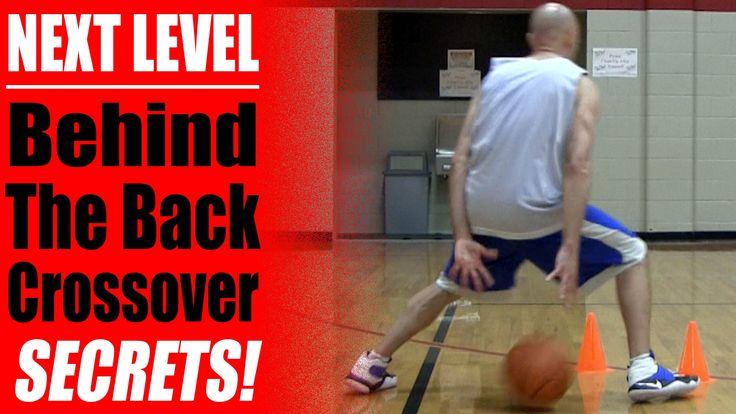
The initial stage of personal pressing is carried out by two fundamentally different tactical formations:
1. The opponent who introduces the ball into the game holds a high moving edge and with an active movement of the hands prevents him from making an aimed pass.
2. No one guards the opponent who puts the ball into play, but two pressers prevent the most dangerous dribbler from getting the ball.
For example, Volkov secured Sokka and Marciulionis from behind when passing to player 5. make him stop and do not let him make an accurate pass, interfering with his hand movements;
2) if the defending partner allowed himself to be bypassed, immediately come to his aid, of course, without leaving your ward in a safe position under the shield;
3) constantly monitor not only your ward, watch the actions of partners, learn to see the whole field.
In the USSR national team and CSKA, zone pressing 1-2-1 - 1 brought us the most success. We started pressing from the opponent's front line after a goal and a free kick. High extreme Volkov interfered with the throw-in. If the ball was injected to the right, Marciulionis and Volkov attacked X2 defender together, trying to prevent him from going forward and make an aimed pass to XI defender, Sokk followed the movement of X3 and X4. Sabonis secured the rear, was responsible for long passes and for the X5 player. Tikhonenko in the center of the field followed X4's pass with a long pass and went to the ball passing side.
We started pressing from the opponent's front line after a goal and a free kick. High extreme Volkov interfered with the throw-in. If the ball was injected to the right, Marciulionis and Volkov attacked X2 defender together, trying to prevent him from going forward and make an aimed pass to XI defender, Sokk followed the movement of X3 and X4. Sabonis secured the rear, was responsible for long passes and for the X5 player. Tikhonenko in the center of the field followed X4's pass with a long pass and went to the ball passing side.
Returning with a weak attack, we built a defense 2-3
Zone defense in basketball
The meaning of this defense is that the players are in charge of a certain area of the field, in accordance with the position of the ball and the formation of the attacking team.
Benefits of zone defense:
1. Gives the opportunity to place players in accordance with their physical, technical and mental characteristics.
Tall, jumpy players are positioned close to the backboard, agile, fast players are in positions higher from the backboard.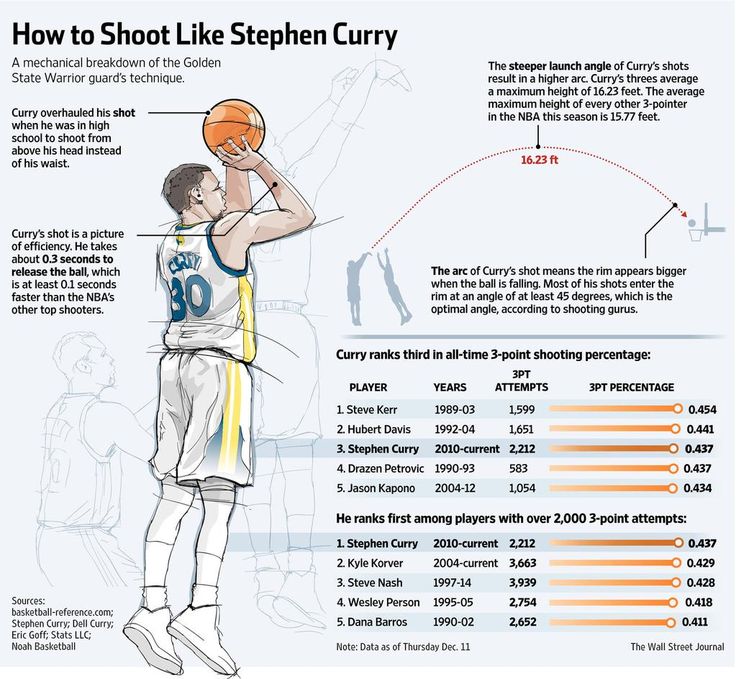
2. More team-oriented, easy to master, able to compensate for the individual gaps in the defense of the players.
3. Promotes counter-attacking and frequent interceptions of the ball with the greatest possible degree of risk, because. Partners are always ready to help.
4. The number of fouls in a zone defense is usually less than in a personal defense.
5. This defense is less vulnerable to screen combinations.
6. Can concentrate with strong opponent centers and stretch with snipers.
7. More than a personal defense, it saves players' strength and protects leaders from fouls.
8. Most effective against opponents with strong centers.
9. A team that owns a zone defense can easily build mixed forms of defense: 3-2, 4-1, 2-3.
10. Convenient and suitable for small fields.
Disadvantages of zone defense:
1. Inferior to the personal psychological responsibility of the players, their charge for individual victory in defense.
2. Less useful against teams with strong snipers.
3. As a rule, the corners of the court are less protected in zone defense.
4. Zone defense may be used occasionally and should not be the main form of defense. It is not advisable to use zone defense at the beginning of the match, when the opponent's players are not yet tired, energetic enough - their throws are more accurate and productive than at the end of the game.
There are several formations of the zone defense, however, each of the zone defenses should easily transform depending on the attack - stretch when attacking from a distance and group around the ring.
Even type of zone defense formations includes systems: 2-2-1, 2-1-2, 2-3.
Odd formation: 1-2-2, 1-3-1, 3-2.
Each of these constructions has its advantages and disadvantages, which are useful to analyze.
The arrows indicate the direction of movement of the players. The shaded places on the court are the weak positions of the defense.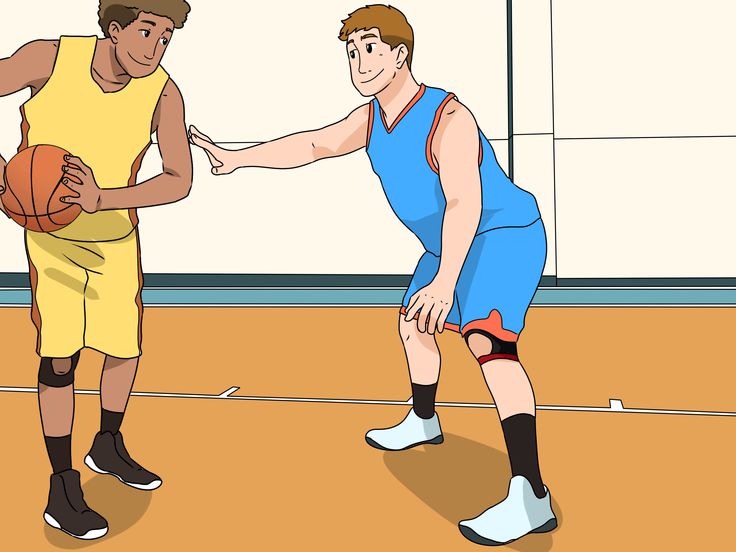
Zone defense 1-2-2
#1 - the lightest, fastest defender, #2 and #3 - quite mobile, jumpy, good if their height is at least 2 m. #4 and #5 - centers. Their task is to fight with the opponent's centers, picking up balls from the shield.
This system is most useful against teams trying to attack from under the shield through the post. Disadvantages - weak positions indicated in the figure.
Zone defense 2-1-2
It is used against strong opponent's centers who are dangerous on the "second floor" when rebounding the ball. Good for developing a counterattack with fast #1 and #2 players. Vulnerable in corners under 45, in the center for long and medium throws. The task of post #5 is to mark the opponents' post and, together with ?3 and ?4, create a rebounding triangle. #3 and #4 are mobile and high wingers, they can be swapped depending on the place of the sniper's attack.
Zone Defense 1-3-1
Helps to keep #3, #5, #2 between the ball and the basket at all times, used against opponent's strong centers and shots from middle and close positions. Her weakness is throws from the corners of the site and passes to the shield along the front line.
Her weakness is throws from the corners of the site and passes to the shield along the front line.
#1 - the fastest defender, running into the gap in every possible situation, #2 and #3 - mobile, jumping players, #5 - center, #4 - the fastest winger, able to move into the corners of the court.
Zone defense 3-2
#1, #2 and #3 are aggressive, mobile players, the success of the whole system largely depends on their activity. All three are focused on intercepting the ball and counterattacking. This system is most acceptable against teams seeking to attack from a distance, and less suitable against strong centers. The 3 second zone and 45 angle positions are the most vulnerable. #1 is in charge of the foul line. #2 and #3 are in a rebound fight. #5 and #4 are the first and second centers.
Zone protection 2-3
Strongest under the backboard, in the corners of the court along the front line. It is used against a tall, powerful team attacking from close positions and from under the shield. Often used for group selection of the ball in the corners of the site. When interacting #4 and #2 or #3 and #1, the defense is less effective on the foul line and at a 45 angle. #5 - center, #4 - second center, #3 - winger, #1 and #2 - defenders, constantly aimed at interception and counterattack.
Often used for group selection of the ball in the corners of the site. When interacting #4 and #2 or #3 and #1, the defense is less effective on the foul line and at a 45 angle. #5 - center, #4 - second center, #3 - winger, #1 and #2 - defenders, constantly aimed at interception and counterattack.
Zone protection 2-2-1
This defense is used by agile and short teams aiming to intercept the ball and constantly counterattack. This zone counterattack is used against teams seeking to attack from medium distances. Center #5 is responsible for rebounding, wingers #3 and #4 are responsible for positions in corners and under 45 , rebounding the ball and for the foul line.
Defenders #1 and #2 tend to close the passes to the shield and into the three-second zone, while they themselves are constantly aimed at counterattacking.
A.Ya. GomelskyDefense against ball carrier
It is necessary to work out the correct position of the body in a basketball stance: the center of gravity is evenly distributed on both legs, but not on a full foot, but on toes, with a "charged" (ready for any movement) foot, knees slightly bent, legs slightly wider than shoulders . Boxing stance - like the great Michael Jordan.
Boxing stance - like the great Michael Jordan.
If the opponent is in possession of the ball, one arm of the defender must be directed at the ball and constantly attack the opponent, preventing him from aiming or throwing (best if it touches the attacker), and the second arm slightly pulled back. Many defenders, being between the player with the ball and the basket, even in the correct stance, do not actively use their hands, do not make an offensive movement towards the attacker, which allows the opponent to calmly take further actions. At the same time, it must be remembered that you cannot cross your legs, that the distance between the defender and the opponent must be calculated so that the opponent can pass with a dribbling to the ring.
Contact defense against the ball carrier, although difficult and somewhat risky, is modern and has its advantages. If your arm extended to the opponent reaches his chest, then by doing so you prevent the attacker from lifting the ball up for a throw.
The defender's movements should be practiced regularly:
a) in each training session - with and without resistance;
b) with one or two balls;
c) with side steps, making contact with the body closest to the attacker.
The defender's actions in different situations can be divided into 12 positions:
1. Defense against a dribbler driving the ball to your ring.
2. Defending against a player who has finished the dribble and is looking to either shoot or pass.
3. Defense against an attacker 5-6 m from the backboard, but not using the dribble.
4. Actions of defenders in numerical minority.
5. Actions of two defenders against three attackers.
6. Actions of three defenders against four attackers.
7. Actions of defenders during screenings.
8. Protection against rear screen.
9. Slip protection.
10. Group tackle by two defenders.
11. Defense against the first pass to the counterattack.
12. Fighting the attacker in the corners of the court.
Fighting the attacker in the corners of the court.
Let's try to analyze the defender's actions in each of these positions.
1. Defender's task - in a parallel low stance, without crossing the legs, move backwards, knees slightly bent, one hand all the time makes attacking movements towards the dribbler (feints with the body and head participate in this frightening dribbler movement), with the other hand he tries to stop the dribble (if possible, knock the ball out). The raised hand is ready to prevent the presenter from making the pass. Hands can be changed, they are always in motion.
As already mentioned, one should move on a "charged" foot, the heels do not touch the floor, the back is straight, slightly tilted forward, the head is raised up.
The leader should be pushed to the sideline, in the corner of the court, or his movement should be directed towards the defensive partner, remembering that the leader must not be allowed to go to the "strong" side (if left-handed - to the left, if right-handed - to the right).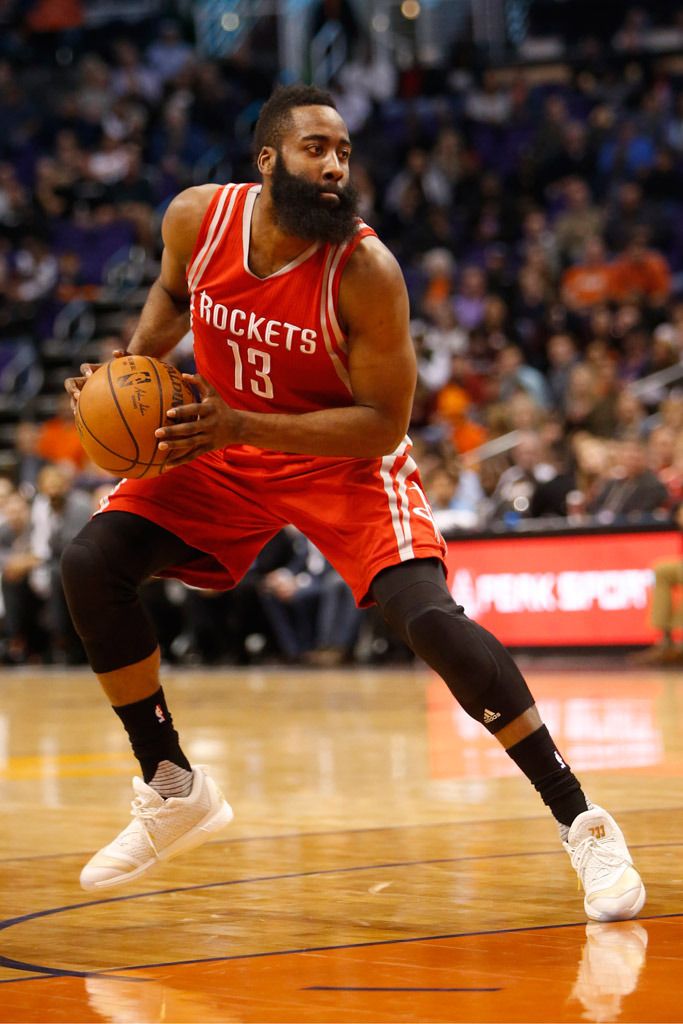
The distance from the leader should be maintained depending on the speed of his rushing with the ball, his ability to attack or pass, as well as your ability, taking into account the position on the field of defensive partners. Do not rush to take the ball away from a good dribbler, wait for him to stop or make a mistake.
2. If the attacker has finished dribbling and has stopped to shoot or pass the ball, the defender must definitely get close to him, actively using his arms, preventing him from concentrating on the next action. The hand closest to the opponent must touch the fingers of his chest or stomach and not allow him to lift the ball up to attack the ring or pass. The defender seeks to force the opponent to turn his back to the shield and, without stopping attacking the attacker, prevents him from making an aimed pass. The defender must signal to his defensive partners to be ready to intercept the ball. These are already team actions.
3. If the opponent has received the ball 5-6 m from the backboard and he is in possession of the dribble, the defender must not stop actively attacking the attacker; make short lunges with your front foot, use your hands to prevent him from aiming. The attacker cannot be missed to the shield along the front line, if he moves slightly towards it, none of the partners will help the defender. The hand close to the end line insures the passage with the lead, the other one attacks the attacker.
The attacker cannot be missed to the shield along the front line, if he moves slightly towards it, none of the partners will help the defender. The hand close to the end line insures the passage with the lead, the other one attacks the attacker.
Do not give in to feints. If the attacker went to the end line where the defender took up position, you can meet him with his chest and show the referees that he knocked you down. Don't be afraid and learn to fall gently on your back.
If the attacker, despite the activity of the defender, lifted the ball for a throw, you should try to jump with him and prevent the throw. Do not stop working even when the opponent has already made a throw or pass. Do not turn away from him and block his path to the shield. When you take a step back, meet him with your face, and do not try to run after him. You should always be in these moments between the opponent and your shield.
4. If the defender is alone against two attackers, he tries to prevent the ball from being thrown from under the backboard and retreats with his back to his ring so that he can see both attackers. With false movements, he tries to stop the player with the ball and prevent him from making a pass to the opponent under the ring or in time for him in order to block the throw from afar. Not allowing the ball to be thrown from under the shield, the defender will fulfill his mission.
With false movements, he tries to stop the player with the ball and prevent him from making a pass to the opponent under the ring or in time for him in order to block the throw from afar. Not allowing the ball to be thrown from under the shield, the defender will fulfill his mission.
2x1 training on the spot and on the move develops reaction in defenders, teaches active arm movement, backward movement, composure and ability to intercept the ball.
5. Two defenders against three forwards - a common situation in any match, so the defenders, regardless of their position, being in the minority, must know their maneuver.
The front defender moves towards the dribbler to stop him at the top of the three-point offensive zone. He uses a feint, showing that making contact with this attacker is his main real task. At the same time, he should not get close to the opponent leading the ball. The rear defensive player takes a position on the free throw line, behind the front one and, after the pass from the dribbler, moves towards the player who received the ball - he is responsible for passing this player to the backboard or throwing from close range. The front defender, meanwhile, quickly moves to the third striker under the shield, managing to prevent him from getting the ball. The task of the two defenders is to prevent the ball from being thrown from under the shield. Exercises 3x2, 4x3, 5x4 are a good school for practicing such actions. You can train them by attacking with two balls.
The front defender, meanwhile, quickly moves to the third striker under the shield, managing to prevent him from getting the ball. The task of the two defenders is to prevent the ball from being thrown from under the shield. Exercises 3x2, 4x3, 5x4 are a good school for practicing such actions. You can train them by attacking with two balls.
6. If three defenders are defending against four attackers, their actions are built as follows. If attacker XI has the ball, defender ?1 rushes towards him, defender ?2 is responsible for throwing and moving to attacker XZ's shield, defender ?3 moves to the shield. If attacker X2 receives the ball, defender ?1 tends to it. Defender ?3 is responsible for attacker X4, defender ?2 moves to the basket.
A 4x3 drill on the spot and on the move, with rebounding the ball after a throw, with one and two balls - a good rehearsal for a defense of three against four.
7. Today, not a single even very serious team imagines an attack without a combination of screens.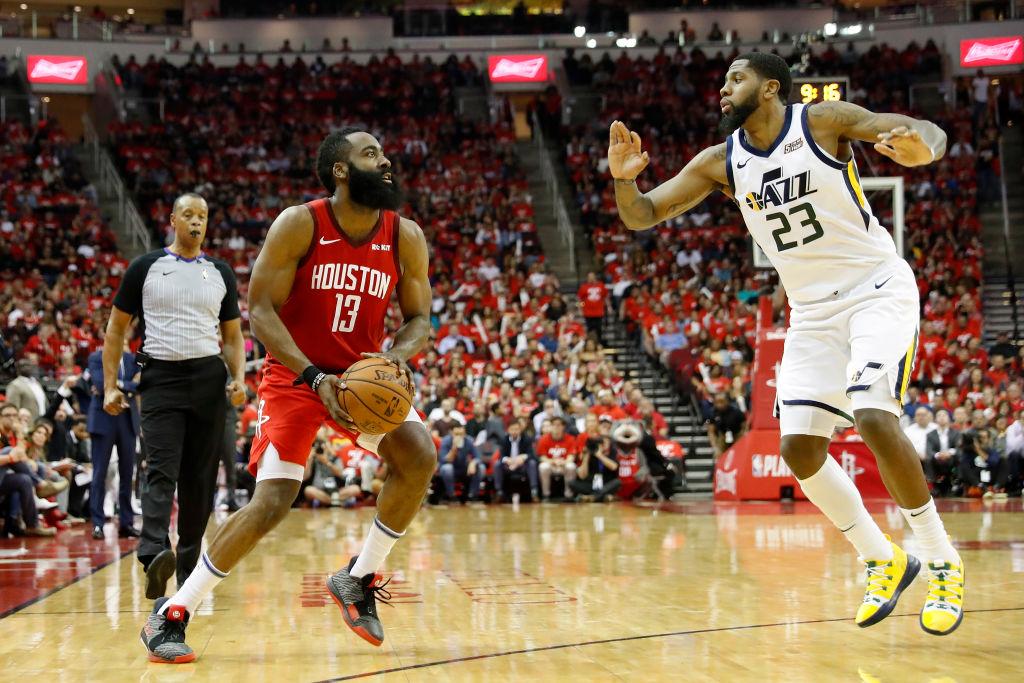
Coordination of actions of the team's defenders, warning about the impending screen determine the preparation of the team to fight the screens.
The guard guarding the screening player must warn his partner of the imminent threat. If the screen without the ball is made by attackers of the same height, there is no great danger of changing the defenders.
If the defenders want to avoid changing when screening from the side, the defender must turn towards the defender and step back, bypassing him from behind, which will not allow the attacker to pass to the backboard.
If the attacker screens from the blind side, from behind, the defender must open towards the defensive partner, turning sideways to him. This will make it difficult to set up a barrier.
8. If your partner puts a screen on the sniper when attacking from medium or long distances behind the defender and you did not have time to get out from under such a screen, a change is necessary: your partner switches to the sniper with his hand raised and prevents him from making a throw. You are left with a dangerous, taller opponent, and your task is to prevent him from getting the ball or picking up the ball after the throw.
You are left with a dangerous, taller opponent, and your task is to prevent him from getting the ball or picking up the ball after the throw.
It is difficult to do without the help of partners in this situation. In general, I am a supporter of the smallest shift with screens, because. this reduces individual responsibility and gives the attacker a chance to beat the defender.
9. If your player, while in possession of the ball, seeks to pass to a teammate who is close to him, you must step back and allow your defensive partner to slip, and then take an active position towards your attacker.
10. The defensive player should always try to get the dribbler to the touchline, into the corner of the court, stop him and turn his back to the backboard.
The second defender, seeing this situation, attacks the opponent with the ball from the other side. Both of them with active hand movements interfere with making an aimed pass. It is important that the rest of the defense players are ready, focused on intercepting the ball.
11. The USSR national team used the defense against the first pass in a fast break more than once against opponents who counterattack through a fast dribbler, sending him the first pass after picking up the ball from the backboard. So we often defended against the Spanish national team, where the ?1 dribbler was Carbolan or Salosobal.
Our team's tall center, who plays close to the backboard, whether it's Tkachenko, Sabonis or Belostenny, prevents the dribbler from making an accurate first pass. At the same time, our fast defender, for example, Homichujus, presses ?1 opponent and does not allow him to receive the ball. The other three of our players were to immediately return to their zone.
So often the counterattack of the Spanish national team failed, in which the Spaniards were especially dangerous and productive.
I must say that there are some significant differences between the game of our and American defenders. According to my conclusions, they are:
1. Americans on the defensive are always offensive, they are not afraid of a contact attack on the attacker in possession of the ball.
Americans on the defensive are always offensive, they are not afraid of a contact attack on the attacker in possession of the ball.
In a low stance with arms raised, the US defender seeks to hit the ball, prevent a pass from being made, not to mention a shot. If the attacker lifts the ball up, the defender immediately reacts to this: his hand rises up and seeks to interfere with any actions of the attacker. The attacker put the ball down - the defender immediately takes two quick steps back, preparing to prevent the opponent's pass without losing his defensive stance.
2. When active, the American defender never allows the attacker to pass with the ball through the center, into the middle, but constantly pushes him to the sideline. When an attacker is missed on the front line, teammates immediately come to the aid of the defender. Our tactic is, on the contrary, to close the baseline, where, as we believe, it is more difficult to provide team assistance. I think it's best to find a compromise here: train the safety net both in the middle of the three-second zone and when passing on the front.